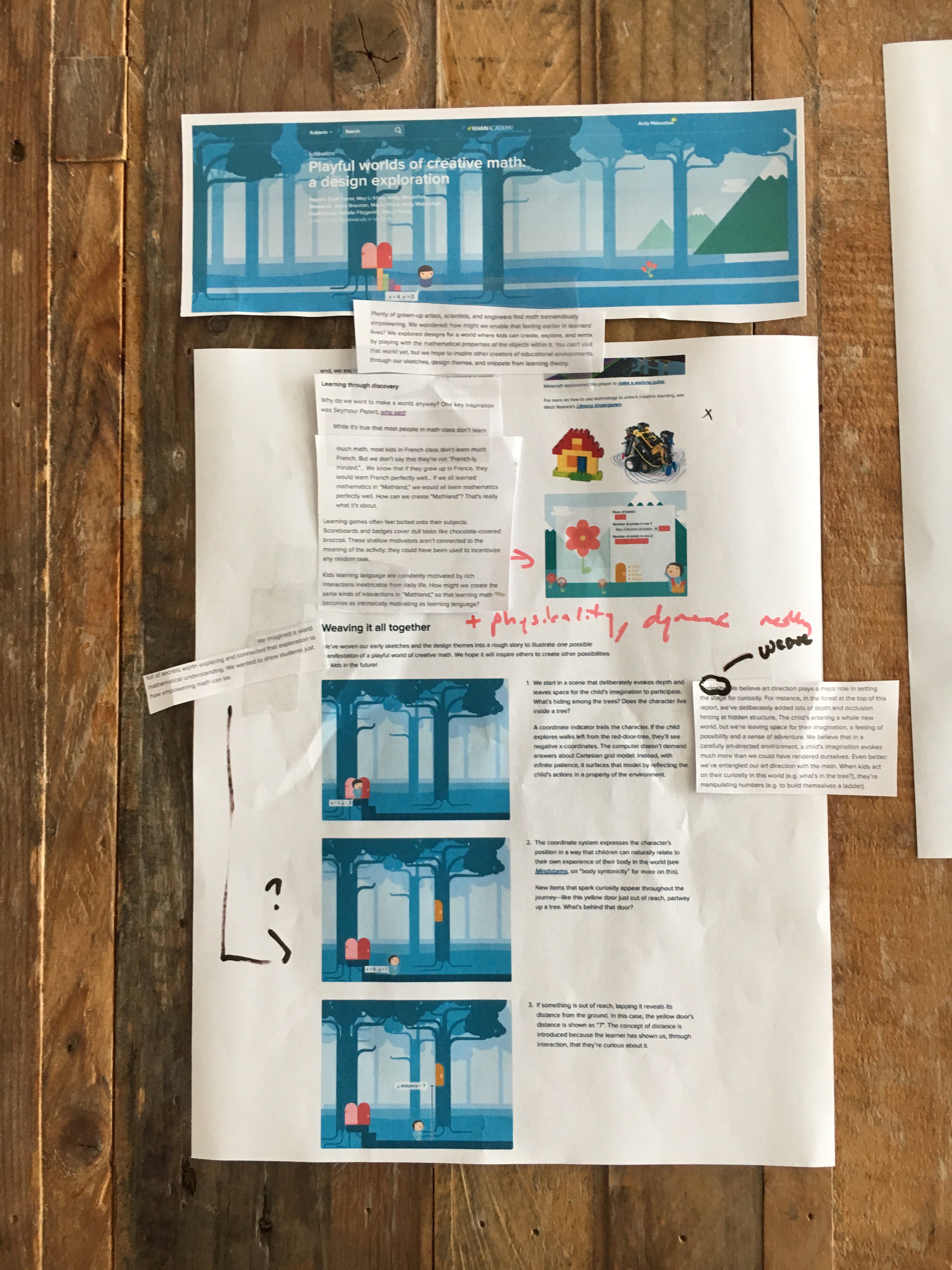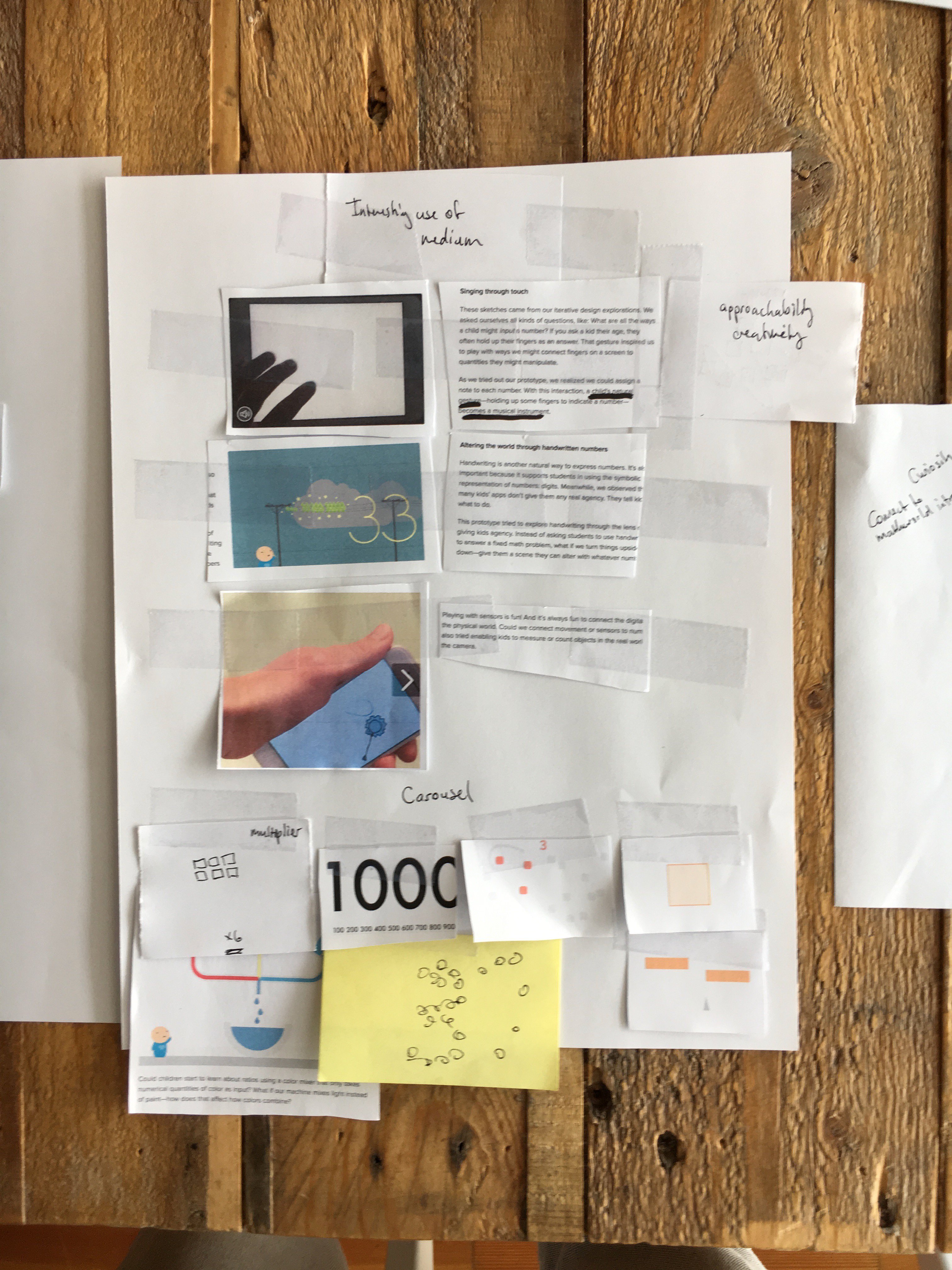Andyʼs working notes
About these notesPhysical cut and paste is a parallel act involving informal intermediate states
Larry Tesler’s classic “cut” and “paste” operations are named after physical counterparts an author might employ as he edits a composition. But, as Ted Nelson points out in Geeks Bearing Gifts, the digital version is rigidly formal and sequential, whereas the physical activities are inherently parallel and informal. When physically cutting and pasting, you cut up your work, spread it on the floor, and rearrange the pieces. Along the way, they’ll pass through various temporary, “invalid” configurations as you explore the connections.



The standard digital cut and paste prevents the fluidity of the physical process. Worse, there isn’t even “expert-level” software which enables something like the original behavior for sophisticated use cases. An approach like that of LiquidText might work, but there seem to be many unsolved problems in that space.
This is vaguely connected to Peripheral vision: you want to be able to see and manipulate the whole and the parts simultaneously here, but you can’t.
Related: We lack UI patterns for non-destructive filtering and rearrangement on a 2D canvas
References
Ted Nelson’s chapter summary for his book, Geeks Bearing Gifts: http://geeks-bearing-gifts.com/gbgContents.html
The term “cut and paste”, as used by writers and editors for many years, refers to rearrangement of paper manuscripts by actually cutting them and physically rearranging them on desktop or floor. ==It is a process of parallel contemplation and rearrangement, where you look at all the parts, move pieces around, put them in temporary nonsequential arrangements, and choose a final sequence.==
In 1984 this changed: when the Macintosh comes out, they change the meaning of “cut” to hide and the meaning of “paste” to plug. To be fair, many people, not just the PARCies, imagine that the serial process of hiding and plugging contents is THE SAME as the parallel process of rearrangement.
This original parallel rearrangement process is fundamental to writing and revision, especially in large-scale projects. Because no good rearrangment software exists, it is far harder to organize large projects on the computer than it was with typewriters, before the PUI. The organization of large projects has become far more difficult, unless you print out and physically cut and paste the old way.
The characteristic of knowledge workers having cluttered desks might be explained thus: whilst a piece of written information is in the process of informing a knowledge worker, then they cannot sensibly name it and file it because its subsequent use or role in their world is as yet undetermined. In contrast, the information filed in a PDA can only inform the kind of action which they could determine in advance that it would inform.